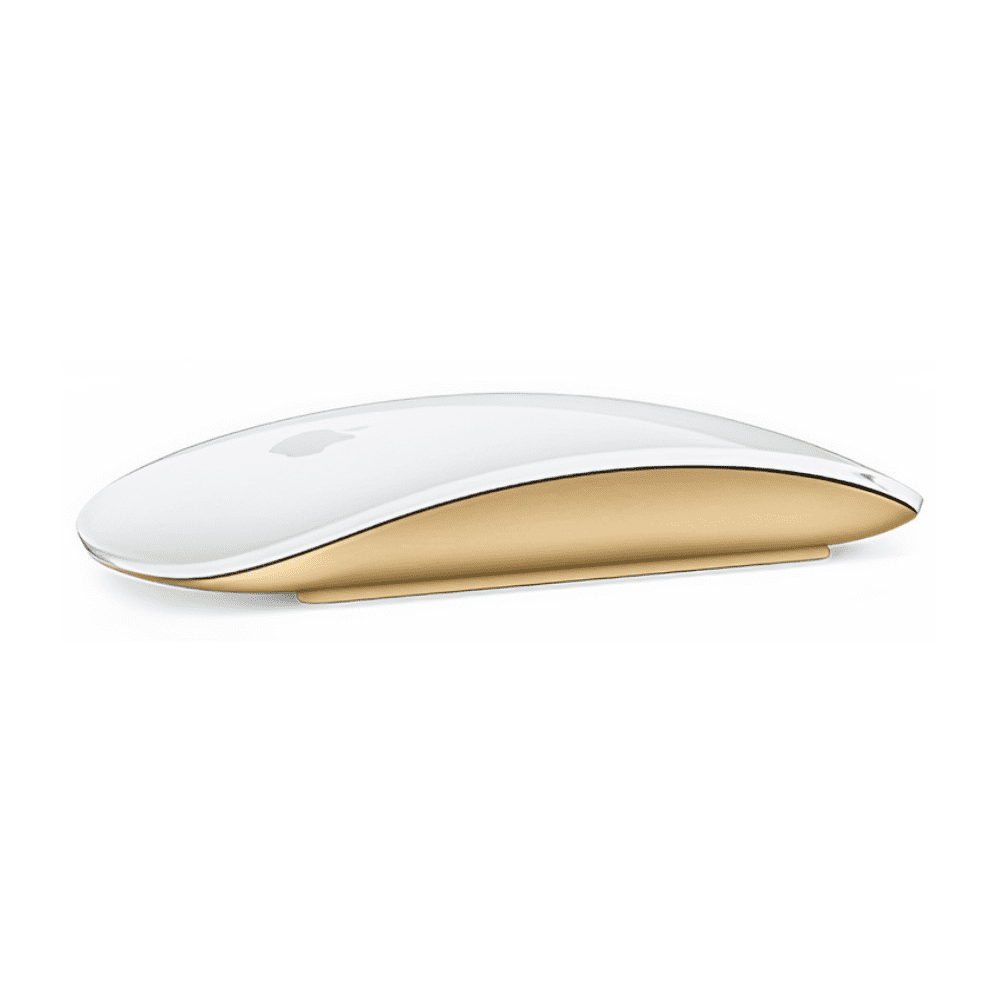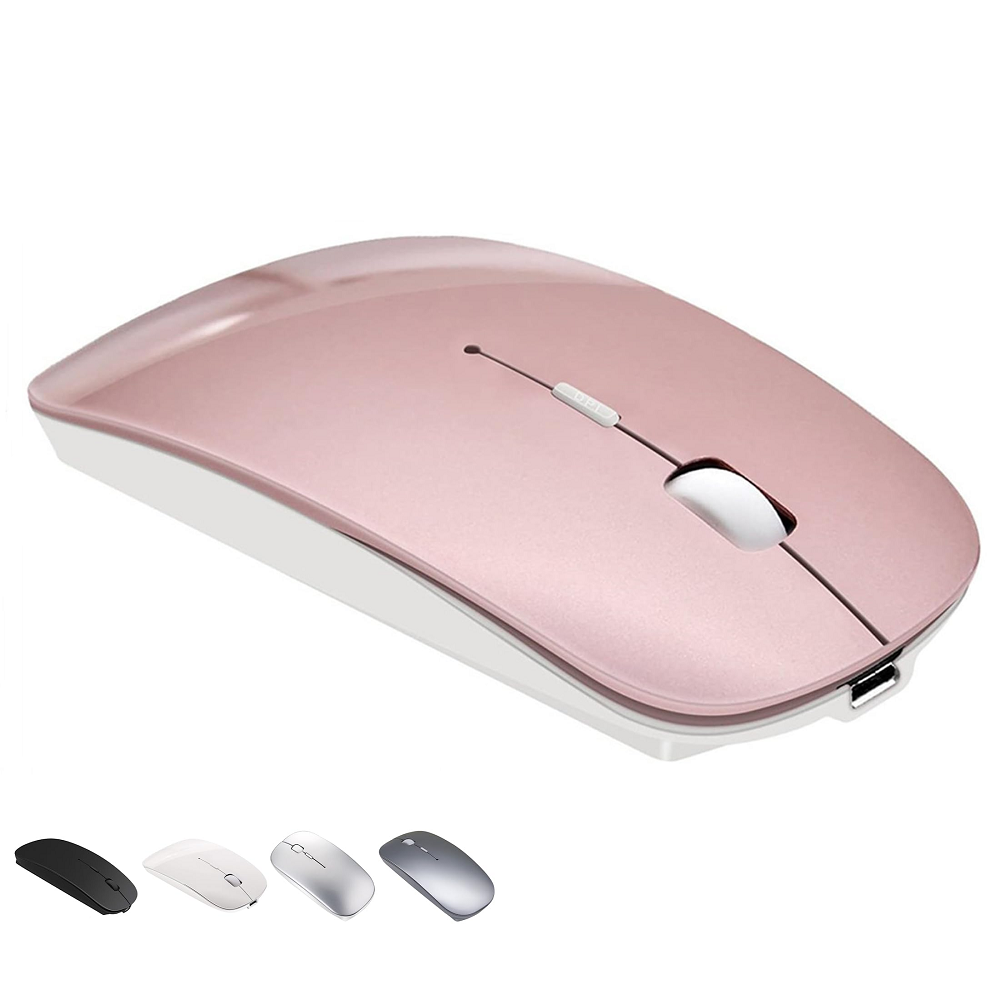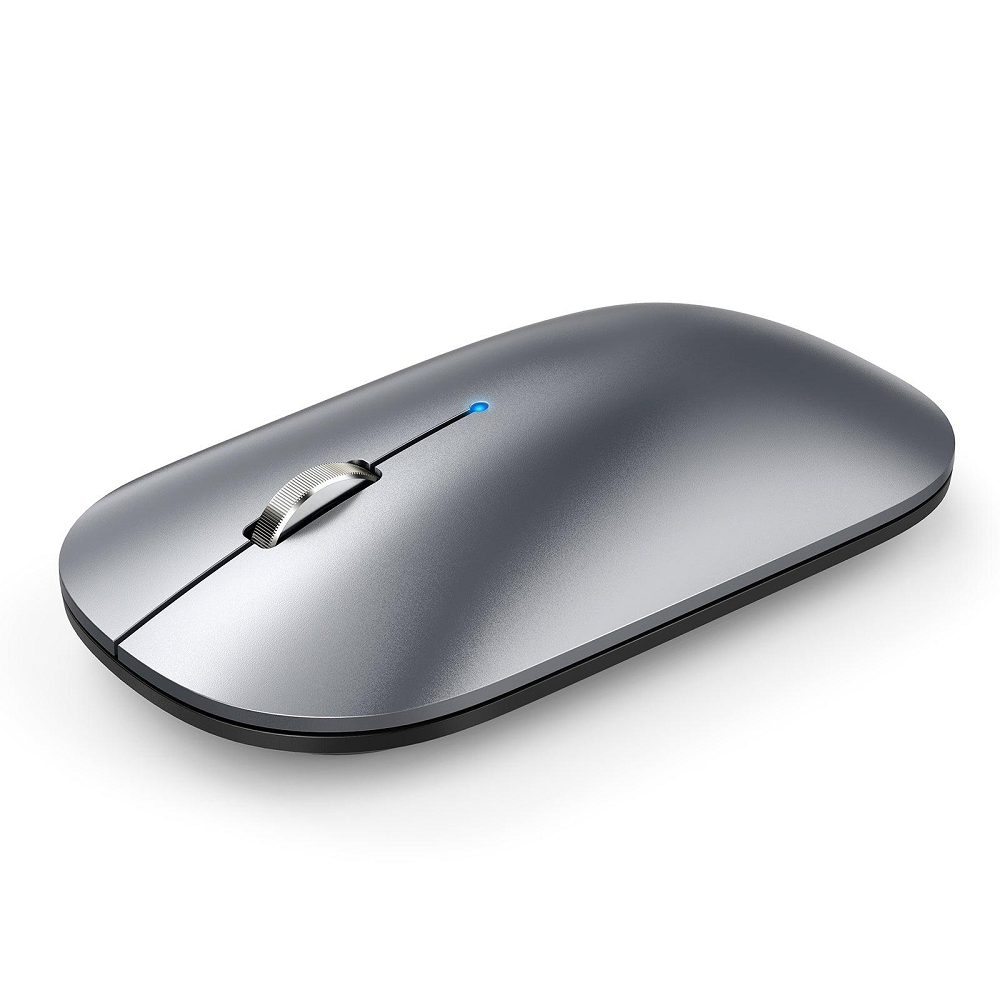Introduction to Apple Wireless Mouse
Apple has always been at the forefront of technological innovation, producing products that not only push the envelope but also set new standards. The Apple Wireless Mouse, often known as the Magic Mouse, is no exception. Combining seamless design with cutting-edge technology, the wireless Apple mouse has revolutionized the way users interact with their computers. It combines aesthetics, ergonomics, and functionality in a sleek, minimalist package.
The Magic Mouse’s importance in Apple’s ecosystem cannot be understated. It not only complements the design of Apple’s desktops and laptops but also integrates seamlessly with macOS, offering a range of multitouch features that enhance the user experience. This article delves into the intricate details of the Apple Wireless Mouse, exploring its history, design, features, and overall impact on users. From casual use to professional workflows, the wireless Apple mouse has earned its reputation as a versatile and reliable accessory.

The Evolution of the Wireless Apple Mouse
The Journey from Wired to Wireless
Apple has a history of evolving its peripherals to match advancements in technology and user expectations. The journey from wired mice to the wireless Apple mouse epitomizes this evolution. Apple’s earlier wired mice, such as the Apple Lisa Mouse and the Hockey Puck Mouse, were innovative for their time but had limitations in terms of usability and comfort. As wireless technology matured, Apple saw the potential to create a mouse that offered greater freedom of movement and improved functionality.
The first significant step towards wireless innovation came with the introduction of the Apple Wireless Mouse (A1015) in 2003. This Bluetooth-enabled device offered basic wireless freedom but lacked advanced features. It functioned well but was a precursor to something much more sophisticated. As Bluetooth technology and battery life improved, Apple was ready to launch a groundbreaking product that would redefine the wireless mouse market.
The Birth of the Magic Mouse
In October 2009, Apple introduced the Magic Mouse, a revolutionary device that broke new ground in the realm of computer peripherals. It was the first mouse to feature a multitouch surface, allowing users to perform gestures previously seen only on touchscreens. Swipes, scrolls, and taps could be executed with ease, making it an intuitive addition to Apple’s ecosystem. The Magic Mouse not only brought wireless freedom but also a new mode of interaction that enriched the user experience.
The initial reception was overwhelmingly positive, with users praising the device’s sleek design and functional versatility. However, there were criticisms as well, particularly pertaining to ergonomics. Despite this, the Magic Mouse became a staple for many, leading to subsequent iterations and improvements. In October 2015, Apple launched the Magic Mouse 2, which featured an integrated rechargeable battery and a more streamlined design. This update addressed many of the concerns voiced by users and solidified the mouse’s status as a must-have accessory for Apple users.
Design and Ergonomics
Sleek and Minimalist Aesthetics
Apple prides itself on producing products that are not only functional but also aesthetically pleasing. The Magic Mouse is a testament to this design philosophy. Its sleek, low-profile form factor is immediately recognizable and complements the minimalist design of Apple’s other products. The smooth, uninterrupted surface of the Magic Mouse is free from physical buttons or scroll wheels, giving it a futuristic appearance.
The exterior is made of a durable and glossy plastic that seamlessly integrates with an aluminum base. The entire mouse is contoured into a seamless curve, making it visually appealing from any angle. The underside features a lightning port for charging and two plastic rails that allow for smooth gliding across different surfaces. Available in both silver and space gray, the Magic Mouse fits comfortably into Apple’s aesthetic portfolio.
Ergonomics and Usability
While the design of the Magic Mouse is undoubtedly striking, it has not been without its criticisms regarding ergonomics. The low-profile design, while visually elegant, may not suit all users, particularly those with larger hands. Some users have reported discomfort during prolonged use due to the mouse’s flat shape, which can strain the wrist.
However, Apple has mitigated some of these concerns by ensuring the Magic Mouse is incredibly lightweight, making it easier to maneuver. Additionally, the multitouch surface provides a unique way of interacting with macOS, reducing the need for traditional clicking and scrolling. While it may take some time to get used to, many users find that the intuitive gestures offer a smoother and more efficient workflow.
One notable improvement in the Magic Mouse 2 is the switch to an integrated rechargeable battery. Older versions of the Apple Wireless Mouse relied on AA batteries, which added weight and required frequent replacement. The rechargeable battery in the Magic Mouse 2 not only contributes to its lightweight design but also aligns with environmental sustainability by reducing battery waste. Charging is straightforward, accomplished via a lightning cable, though the placement of the charging port on the bottom of the mouse has been a point of contention among users.
Multitouch Features and Functionality
Multitouch Surface and Gestures
One of the most revolutionary aspects of the Magic Mouse is its multitouch surface. Traditional mice rely on physical buttons and scroll wheels for interaction, but the Magic Mouse replaces these with a smooth, touch-sensitive surface. This multitouch capability opens up a world of possibilities for advanced gestural controls that enhance productivity and efficiency.
Users can perform a variety of gestures on the Magic Mouse. For example, a simple swipe with one finger navigates backward or forward through web pages or documents. A two-finger swipe can initiate horizontal scrolling, while tapping with two fingers opens Mission Control. The entire surface is clickable, allowing users to perform both left and right clicks by simply pressing down on different sides of the mouse.
These multitouch gestures are seamlessly integrated with macOS, offering a cohesive and intuitive user experience. The ability to scroll through lengthy documents or zoom in on images with just a flick of the wrist makes the Magic Mouse a powerful tool for creative professionals and everyday users alike. Moreover, this level of functionality is continually updated with new macOS releases, ensuring that the Magic Mouse remains relevant and capable.
Customization and Personalization
Apple has always emphasized user customization, and the Magic Mouse is no exception. Through the System Preferences in macOS, users can customize the behavior of the multitouch gestures according to their preferences. Options include enabling or disabling specific gestures, adjusting the tracking speed, and configuring the secondary click function.
In addition to these settings, third-party applications offer additional customization options for the Magic Mouse. Apps like BetterTouchTool and MagicPrefs allow users to assign custom gestures and actions, further enhancing the mouse’s functionality. For example, a three-finger swipe could be set to show the desktop, or a tap with the thumb could trigger a specific application. This level of customization ensures that the Magic Mouse can adapt to the unique workflow of each user, making it a versatile tool for a wide range of tasks.
Another aspect of personalization is the ability to sync multiple Apple devices with the Magic Mouse. Thanks to Bluetooth technology, users can easily switch between a MacBook, iMac, or even an iPad. This versatility ensures that the Magic Mouse remains a central component of the Apple ecosystem, providing consistent and seamless performance across multiple devices.
Performance and Battery Life
Wireless Connectivity
The Magic Mouse leverages Bluetooth technology for wireless connectivity, providing users with the freedom to use the mouse without the constraints of cables. This wireless capability is particularly beneficial for users who prefer a clutter-free workspace or need to use the mouse at a distance from their computer. Pairing the Magic Mouse with an Apple device is straightforward, typically requiring just a few clicks in the Bluetooth settings.
The Bluetooth connection is reliable and provides a strong signal, minimizing the likelihood of lag or disconnection during use. This ensures that the Magic Mouse performs consistently, whether you’re navigating through a presentation, editing photos, or simply browsing the web. The absence of a dongle or receiver also adds to the convenience, as there’s no need to occupy a USB port on the computer.
One of the standout features of the Magic Mouse’s wireless connectivity is its integration with Apple’s Continuity and Handoff features. These features allow users to seamlessly switch between Apple devices, such as transitioning from a MacBook to an iPad, without any manual re-pairing. This seamless switching enhances productivity and ensures that the Magic Mouse remains a central accessory in the Apple ecosystem.
Battery Life and Charging
Battery life is a critical consideration for any wireless device, and the Magic Mouse excels in this regard. The integrated rechargeable battery in the Magic Mouse 2 offers impressive longevity, often lasting several weeks on a single charge with regular use. This extended battery life minimizes the need for frequent recharging, allowing users to focus on their tasks without interruptions.
Charging the Magic Mouse is simple and convenient, thanks to the use of a lightning cable. While the placement of the charging port on the bottom of the mouse has been a point of contention, requiring the mouse to be upside down during charging, the relatively short charging time mitigates this inconvenience. A mere two-minute charge can provide enough power for several hours of use, and a full charge is typically completed within a couple of hours.
Apple’s commitment to sustainability is evident in the design of the Magic Mouse’s battery system. By transitioning from disposable AA batteries to an integrated rechargeable battery, Apple has reduced the environmental impact associated with battery waste. This aligns with Apple’s broader environmental initiatives and ensures that the Magic Mouse remains an eco-friendly option for users.
Compatibility and Integration with Apple Ecosystem
Seamless Integration with macOS
One of the key strengths of the Magic Mouse is its seamless integration with macOS. From the moment it’s paired with a Mac, the Magic Mouse offers a cohesive user experience that leverages the full potential of the operating system. The multitouch gestures are tailored to macOS, allowing users to navigate through applications, documents, and web pages with ease.
The System Preferences in macOS provide a range of customization options for the Magic Mouse, enabling users to tailor its behavior to their specific needs. This includes configuring gestures, adjusting tracking speed, and setting up secondary click functions. The tight integration ensures that the Magic Mouse feels like an extension of the Mac, enhancing productivity and efficiency.
In addition to macOS, the Magic Mouse is also compatible with iOS and iPadOS devices, providing a consistent user experience across different platforms. This cross-device compatibility is particularly beneficial for users who own multiple Apple devices, as it allows them to utilize the Magic Mouse’s features regardless of the device they’re using.
Compatibility with Third-Party Applications
While the Magic Mouse is optimized for use with macOS, it is also compatible with various third-party applications that enhance its functionality. Apps like BetterTouchTool and MagicPrefs offer additional customization options, allowing users to assign custom gestures, create macros, and set up unique actions. These applications provide a level of flexibility that ensures the Magic Mouse can adapt to the unique workflow of each user.
BetterTouchTool, for example, allows users to create custom gestures for the Magic Mouse that can trigger specific actions or shortcuts. This includes multi-finger swipes, taps, and Force Touch gestures, providing a wide range of possibilities for enhancing productivity. Similarly, MagicPrefs offers detailed customization options, enabling users to fine-tune the behavior of the Magic Mouse according to their preferences.
These third-party applications extend the functionality of the Magic Mouse beyond what is possible with macOS alone. They ensure that the Magic Mouse remains a versatile tool that can adapt to the evolving needs of users, providing a tailored experience that enhances efficiency and productivity.
User Feedback and Market Reception
Positive Reception and Critical Acclaim
The Magic Mouse has received widespread acclaim for its innovative design, multitouch capabilities, and seamless integration with the Apple ecosystem. Users have praised the device for its sleek aesthetics, intuitive gestures, and reliable performance. The Magic Mouse is often lauded for its ability to enhance productivity and streamline workflows, making it a popular choice among creative professionals, students, and everyday users.
Reviewers have also highlighted the Magic Mouse’s unique multitouch surface, which sets it apart from traditional mice. The ability to perform gestures such as swipes, taps, and scrolls directly on the mouse surface provides a level of interaction that is both intuitive and efficient. This innovative approach to user input has garnered praise from both critics and users alike.
Additionally, the switch to a rechargeable battery in the Magic Mouse 2 has been well-received, addressing one of the common criticisms of the earlier model. Users appreciate the convenience of not having to replace disposable batteries and the environmental benefits associated with the move to rechargeable power. The overall build quality and attention to detail further contribute to the positive reception of the Magic Mouse.
Criticisms and Areas for Improvement
While the Magic Mouse has received widespread acclaim, it is not without its criticisms. One of the most common concerns is related to ergonomics. The low-profile design, while visually appealing, may not be comfortable for all users, particularly those with larger hands. Some users have reported discomfort during prolonged use, citing the flat shape as a potential cause of wrist strain.
The placement of the charging port on the bottom of the mouse has also been a point of contention. This design choice means that the Magic Mouse cannot be used while charging, which some users find inconvenient. While the relatively short charging time mitigates this issue to some extent, it remains a point of criticism for those who rely heavily on the device.
Despite these criticisms, the Magic Mouse continues to be a popular and well-regarded accessory in the Apple ecosystem. Apple’s commitment to continuous improvement and innovation suggests that future iterations of the Magic Mouse may address some of these concerns, further enhancing its appeal and functionality.
Conclusion
The Magic Mouse as a Game-Changer
The Magic Mouse has undoubtedly been a game-changer in the realm of computer peripherals. Its innovative design, multitouch capabilities, and seamless integration with macOS have set new standards for wireless mice. By combining form and function, the Magic Mouse offers a user experience that is both intuitive and efficient, enhancing productivity and streamlining workflows.
Apple’s dedication to quality and innovation is evident in every aspect of the Magic Mouse, from its sleek aesthetics to its advanced features. The device’s ability to adapt to the unique needs of each user, coupled with its compatibility with multiple Apple devices, ensures that it remains a central accessory in the Apple ecosystem.
Looking Ahead
As Apple continues to push the boundaries of technology, it is likely that future iterations of the Magic Mouse will build on its strengths while addressing areas for improvement. Enhanced ergonomics, additional customization options, and further integration with other Apple products are potential areas of focus. By staying attuned to user feedback and technological advancements, Apple can ensure that the Magic Mouse remains a pioneering device in the world of wireless peripherals.
In conclusion, the Magic Mouse is a testament to Apple’s commitment to innovation and excellence. It combines cutting-edge technology with elegant design, offering a user experience that is both functional and enjoyable. As a versatile and reliable accessory, the Magic Mouse enhances the overall computing experience and stands as a symbol of Apple’s dedication to creating products that enrich the lives of its users.


